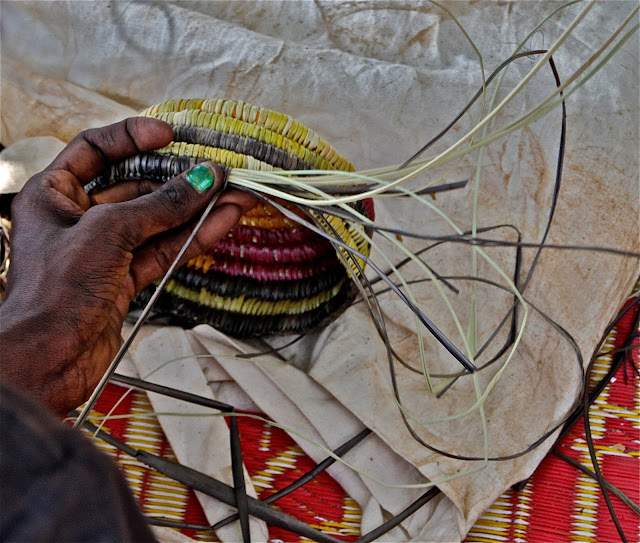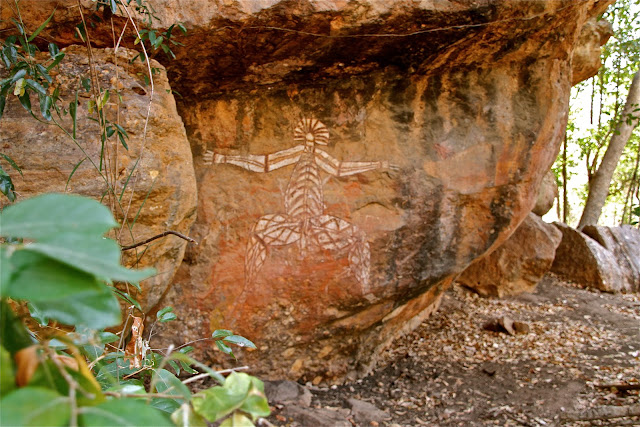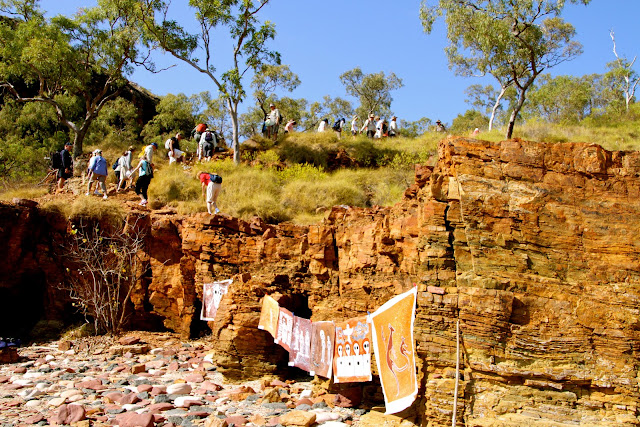This was definitely a very different expedition day!
It was the end of the trip, we'd left the ship, enjoyed
seeing Darwin, moved on to Kakadu National Park,
and ended up here in Arnhem Land.
Paula and I were hardly up for 106 degrees in blazing sun,
armpit soaking, water slurping, dripping humidity, and the
red dust of Australia's remote Northern Territory - known
as the 'Top End'. However, thrill seekers (fools perhaps),
sign on for crazy adventures such as this.................and
we can now look back and share memories of how exciting one
of the more strange days we shared down under.
The magic bus appeared early morning at our crocodile hotel in the Kakadu (more on that another time!)
with Miss Leah at the wheel......and just four more
crazy tourists hopped aboard with us.
Above, Cahill's Crossing on the Alligator River (but
remember, there are no alligators in Australia,
only crocodiles).
First stop, the Border Store for the outdoor bathroom
break, snacks and cold drinks...............
.............and to watch this little Aboriginal boy
fascinated by a faux crocodile swimming in in a large pot!
Of course the crocs rule here...........warning signs
are everywhere and being close to water is somewhat
nerve wracking.....................
..........which is why I'm scoffing down my lunch
on the billabong beach where Leah said to stay
waaaaay back from the water!
While eating, we were suddenly joined by several
decrepit vehicles speeding through the sand within inches
of us. Overloaded with Aboriginals, these cars were
heading to a funeral in a nearby village. We and our
food were soon coated in sand........hardly a
bucolic country picnic.
The Arnhem Land Region's population is 16,230 and it
has been occupied by Indigenous people for tens of
thousands of years. It is the location of the
oldest-known stone axe, which scholars believe to be
35,000 years old.
The climate here is tropical monsoon with a wet and a dry season.
Temperatures do not fluctuate widely throughout the year, it's always hot.
Declared an Aboriginal Reserve in 1931, it
remains one of the largest in Australia
and is best known for its isolation, the
art of its people, and the strong continuing
traditions of its Indigenous inhabitants.
Some areas of deep cultural significance to the
Indigenous inhabitants are off-limits even to those
with permission to travel across Arnhem Land.
The land is beautiful in a rather melancholy way......silence
is pervasive. Lots of birdlife, especially around the
wetland areas - the billibongs - which are small, stagnant
lakes adjacent to, or cut off from, a river or creek, and
often dry up completely in the dry season. We were visiting
at the very end of the dry, the wet coming hot our trail
we were told.
Arnhem Land Region - northeastern corner of the
Northern Territory, Australia..........a spectacular
and diverse landscape, a different place where the culture
and art of the Indigenous people remains strong.
























































.png)



























































































